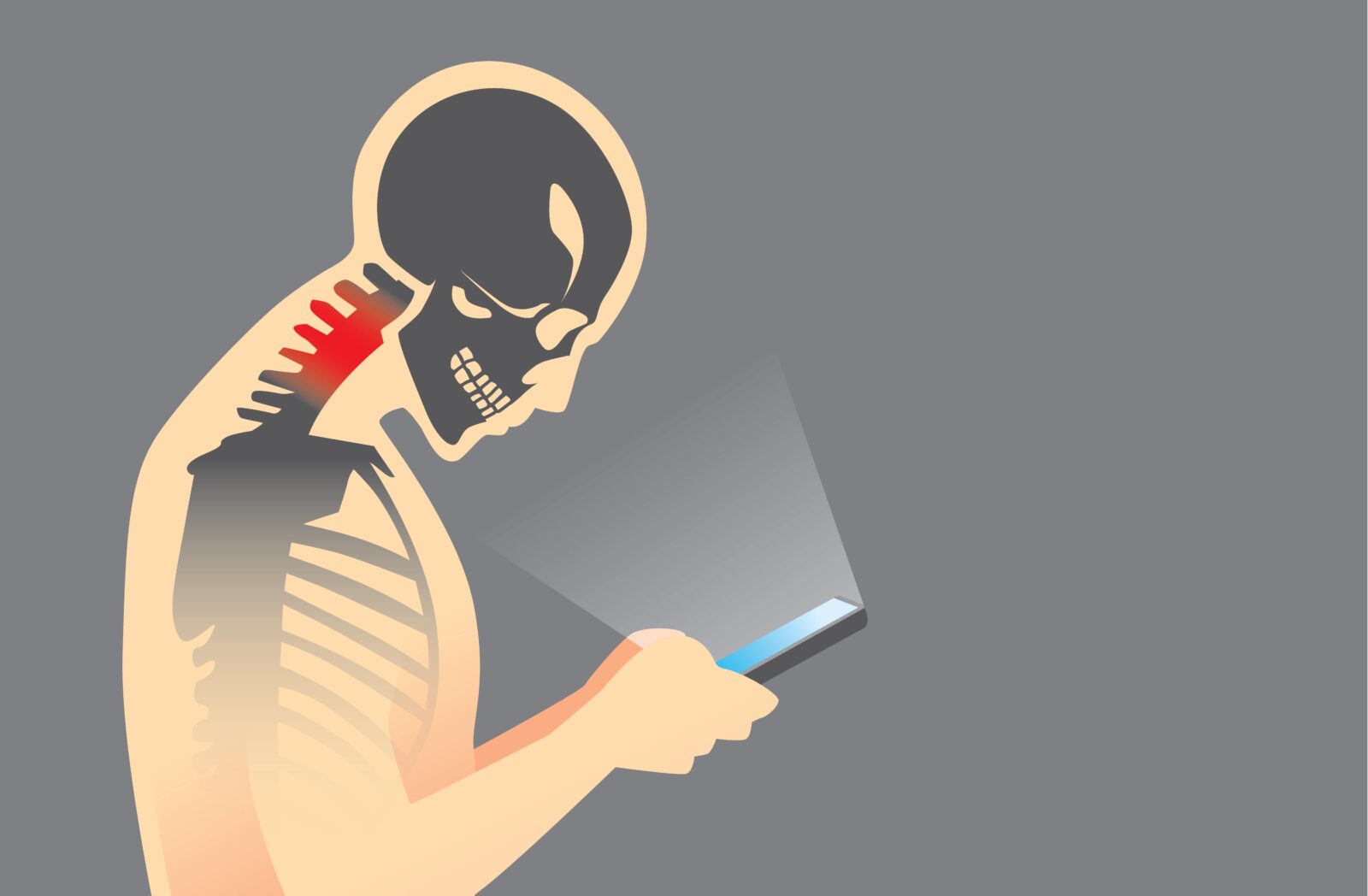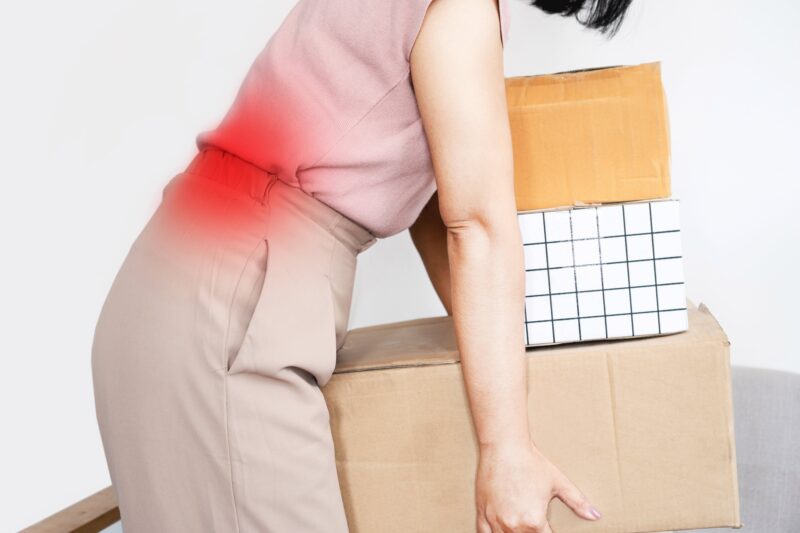Back pain is a common issue that affects many people at various stages of their lives. It can be a result of numerous factors, some of which might not be immediately obvious. If you’re struggling with back pain, it’s essential to consider these seven factors that could be making it worse.
1. Poor Posture
Poor posture is a significant contributor to back pain, especially in an era where many people spend hours hunched over computers or looking down at their smartphones. When you slouch or hunch, your spine is not in its natural alignment, which can put undue strain on your back muscles and spinal discs. This misalignment can lead to chronic pain, muscle fatigue, and even long-term damage to your spinal structure. To remedy this, it’s crucial to be mindful of your posture throughout the day. For those who work at a desk, ergonomic furniture that supports the natural curve of the spine is beneficial. Regular breaks to stand, stretch, and walk around are also essential. Strengthening exercises for the core and back muscles can improve posture over time. Additionally, practices like yoga and Pilates, which focus on alignment and strengthening, can be particularly effective in correcting poor posture and alleviating back pain.
2. Inadequate Sleep and Poor Mattress Support

Quality sleep is vital for back health. Inadequate sleep and poor mattress support are often overlooked factors that can significantly contribute to back pain. When your mattress fails to provide the right balance of support and comfort, it can lead to improper spinal alignment during sleep, resulting in muscle strain and spinal stress. This misalignment can exacerbate existing back issues or even cause new ones. Over time, a lack of restorative sleep can also impair the body’s natural healing processes, making it more susceptible to chronic pain. To remedy this situation, investing in a high-quality mattress that suits your sleeping style and provides adequate support for your spine is essential. The ideal mattress should conform to the body’s contours while offering firm support to maintain the spine’s natural curve. Additionally, establishing a regular sleep routine and creating a comfortable, sleep-conducive environment can enhance the quality of sleep, thus aiding in the relief and prevention of back pain. Remember, everyone’s body is different, so it’s important to choose a mattress and sleep setup that caters to your specific needs.
3. Stress and Tension
Stress and tension play a significant role in contributing to back pain. When stressed, the body’s natural response is to tense up, leading to muscle tightness, particularly in the back and neck regions. This chronic tension can lead to pain, muscle fatigue, and even spasms. Moreover, stress can exacerbate existing back conditions by increasing inflammation and hindering the body’s natural healing processes. To counteract this, implementing stress-reduction techniques is vital. Regular physical activities, such as walking, swimming, or yoga, can help release muscle tension and produce endorphins, natural pain relievers. Mindfulness practices like meditation and deep breathing exercises are effective in reducing mental stress, which in turn can alleviate physical tension. Additionally, ensuring adequate rest and relaxation, pursuing hobbies, and seeking social support can also contribute to lower stress levels and, consequently, lessen back pain. It’s important to recognize that managing stress is not only about mental well-being but also has a direct impact on physical health, particularly when it comes to alleviating back pain.
4. Wearing the Wrong Shoes
Wearing the wrong shoes can have a surprisingly significant impact on back pain. Shoes that lack proper support or are ill-fitted can disrupt the alignment of your feet, ankles, knees, and hips, leading to an imbalance in the way your body moves and stands. This imbalance can place additional strain on your back muscles and spine. For instance, high heels tilt the body forward, altering your posture and increasing the pressure on your lower back. Similarly, flat shoes without adequate arch support can lead to poor posture and alignment issues. To remedy this, it’s crucial to choose footwear that provides good support and fits well. Shoes with a supportive arch and cushioning can help maintain proper alignment and distribute body weight evenly. For those prone to back pain, orthotic inserts may be beneficial as they can be customized to provide the specific support your feet need. It’s also advisable to vary your footwear and avoid wearing the same type of shoes every day, especially those that are known to cause discomfort. By selecting the right shoes, you can significantly reduce the risk of back pain and contribute positively to your overall posture and spinal health.
5. Excessive Screen Time

Excessive screen time is increasingly recognized as a contributor to back pain, especially given the prevalence of smartphones and computer use in daily life. When we spend long hours in front of screens, we often adopt a forward-leaning head posture, which can strain the neck and back muscles. This position, commonly known as ‘tech neck,’ increases the stress on the cervical spine, leading to discomfort and pain that can radiate down to the lower back. Additionally, prolonged sitting while using screens can lead to stiffness and weakening of the back muscles. To remedy this situation, it’s essential to be conscious of posture while using devices. Keeping screens at eye level helps maintain a neutral spine position, reducing strain. Incorporating regular breaks is also crucial; standing, stretching, or walking every 30 minutes can alleviate muscle tension. Exercises focused on strengthening and stretching the neck, shoulders, and back can counteract the effects of prolonged screen time. Ergonomic adjustments to the workspace, such as using a supportive chair, proper desk height, and external keyboards for laptops, can also help in maintaining proper posture and reducing back pain. By addressing these aspects, one can mitigate the negative impact of excessive screen time on back health.
6. Lack of Exercise
A lack of exercise is a significant factor in the development and exacerbation of back pain. Regular physical activity is crucial for maintaining the strength and flexibility of the muscles that support the spine. Without it, these muscles can weaken and become unable to properly support the spinal column, leading to an increased risk of injury and pain. Weak core muscles, in particular, fail to provide adequate support for the lower back, resulting in poor posture and alignment. To remedy this situation, incorporating a balanced exercise routine that includes both aerobic activities and strength training is essential. Exercises like swimming, walking, and cycling are low-impact options that improve overall fitness without putting excessive strain on the back. Strengthening exercises for the core, back, and leg muscles help build the support system necessary for a healthy spine. Additionally, flexibility exercises and stretching, such as yoga or Pilates, can improve the range of motion and reduce the risk of muscle strains and sprains. Starting with gentle exercises and gradually increasing intensity under professional guidance can ensure safety and effectiveness in combating back pain. Regular exercise not only alleviates existing back pain but also plays a crucial role in preventing future back issues.
7. Carrying Heavy Loads Improperly
Carrying heavy loads improperly is a common and often underestimated cause of back pain. When heavy objects are lifted or carried incorrectly, it places a disproportionate amount of strain on the lower back, potentially leading to muscle strain, ligament sprains, and even spinal disc injuries. This improper handling can result in immediate pain or contribute to chronic back problems over time. The key to preventing such injuries lies in adopting proper lifting techniques. Firstly, it’s crucial to lift with the legs and not the back, by bending at the knees and keeping the spine straight. This approach ensures that the leg muscles bear the brunt of the weight, not the back. Secondly, keeping the load close to the body while lifting reduces the strain on the back muscles. It’s also important to avoid twisting the torso while carrying heavy objects, as this can cause undue stress on the spine. For heavier or bulkier items, using lifting aids like a dolly or seeking assistance can prevent overexertion. Educating oneself and others about these safe lifting and carrying practices is a simple yet effective way to reduce the risk of back pain associated with handling heavy loads.
Conclusion
Addressing these seven factors can greatly reduce your back pain or even prevent it. Remember, if your back pain is severe or persistent, it’s essential to consult a healthcare professional for advice and treatment. Taking care of your back is crucial for your overall well-being and quality of life.










